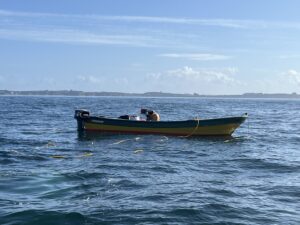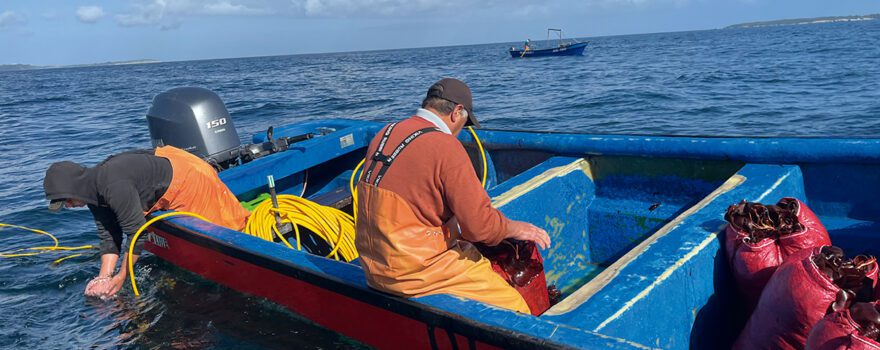
Chile’s vast coastline, bathed by the cold waters of the South Pacific, is a privileged ecosystem with astonishing biodiversity. Its seas not only harbor an invaluable wealth of marine species but also serve as a vital source of livelihood for many coastal communities. Among these natural treasures, seaweed holds a special place, becoming the fundamental raw material for many of Gelymar’s products.
Harvesting in southern Chile
The seaweed used in our products comes from diverse environments: some are cultivated in the warm waters of the tropical belt, others are collected from the shoreline, and some are harvested from the ocean floor. Among them, Red Luga (Gigartina skottsbergii) stands out as the foundation of some of the most exclusive carrageenans in the world. This seaweed, which thrives only in cold waters, is obtained through meticulous diving work—an activity that requires skill, knowledge, and a deep respect for the sea.
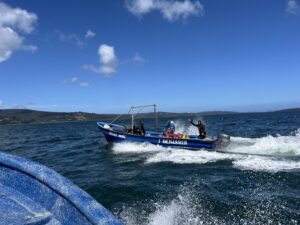
One of the main harvesting areas for Red Luga is located in southern Chile, in the Los Lagos Region, particularly along the coasts of Chiloé Island. There, generations of families have dedicated their lives to fishing and seaweed harvesting, preserving artisanal techniques that ensure a balance with the marine ecosystem. From small inlets, known as “caletas”, where boats find shelter, workers embark each day on the challenge of diving into the sea’s depths.
The harvesting process
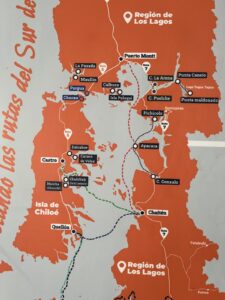 Collecting Red Luga is no easy task. It must be done at specific times of the year, following regulations designed to ensure the sustainability of this resource. The harvest takes place during the summer months, from October to March, when weather and sea conditions are more favorable: calmer waters and better visibility allow divers to work with safety and precision.
Collecting Red Luga is no easy task. It must be done at specific times of the year, following regulations designed to ensure the sustainability of this resource. The harvest takes place during the summer months, from October to March, when weather and sea conditions are more favorable: calmer waters and better visibility allow divers to work with safety and precision.
On harvesting days, boats set sail at dawn with two or three workers on board, heading to designated collection areas. One of them dives into the water, protected by a thick neoprene suit to withstand the frigid temperatures of southern Chile. At depths of up to 20 meters, the diver carefully collects the seaweed, placing it in a net that, once full, is brought to the surface and stored on the boat.
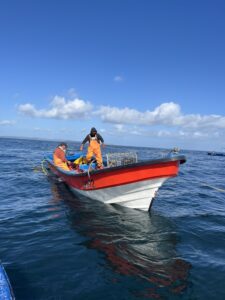
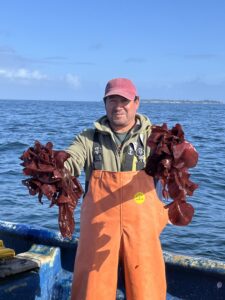
Commitment to the future
At the end of the day, the boats return to the “caletas”, where a team awaits to receive the harvest. The collected seaweed is meticulously weighed and recorded, ensuring strict monitoring that allows authorities to track extraction volumes and prevent overexploitation. This collaborative effort between local communities and national authorities is key to preserving the balance of the marine ecosystem.
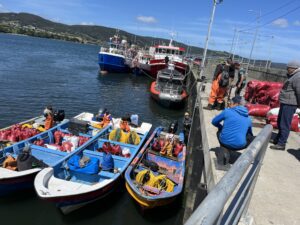
Sustainability is the cornerstone of this activity. The regeneration of seaweed is essential for the future of the communities that depend on it. Therefore, once the harvest is complete, the same divers plant new seaweed, which will grow for the next season. This cycle of care and renewal not only guarantees the continuity of the resource but also strengthens the bond between nature and those who have dedicated their lives to this work.
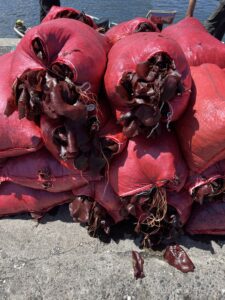

Seaweed harvesting is the first link in a value chain that allows Gelymar to bring carrageenans to the world. Behind every product, there is a story of effort, tradition, and commitment to sustainability. Working hand in hand with local communities and respecting their ancestral knowledge not only enriches our work but also gives deeper meaning to everything we do.
